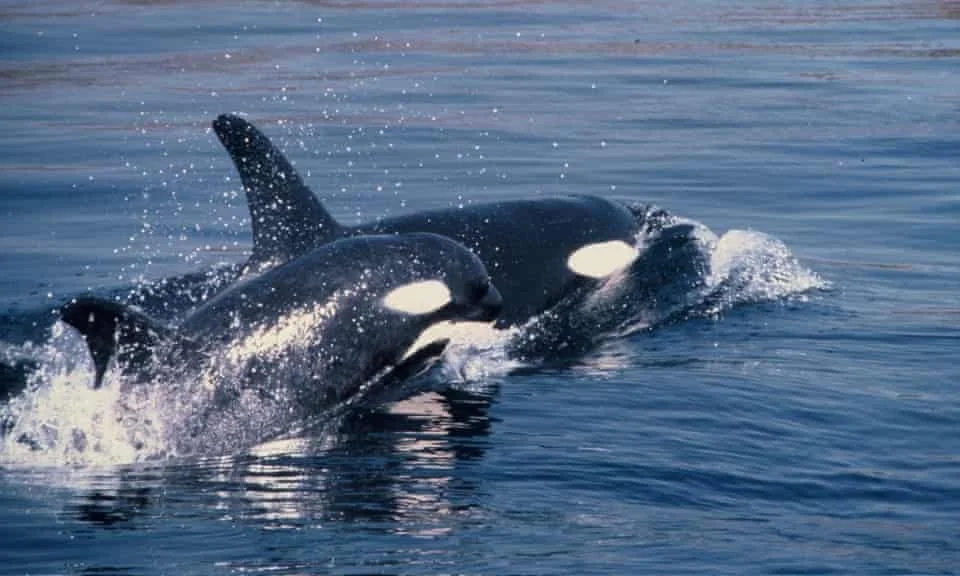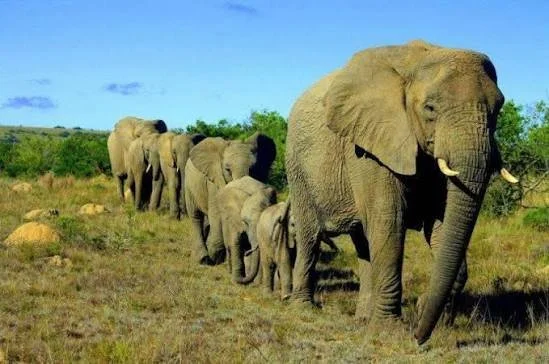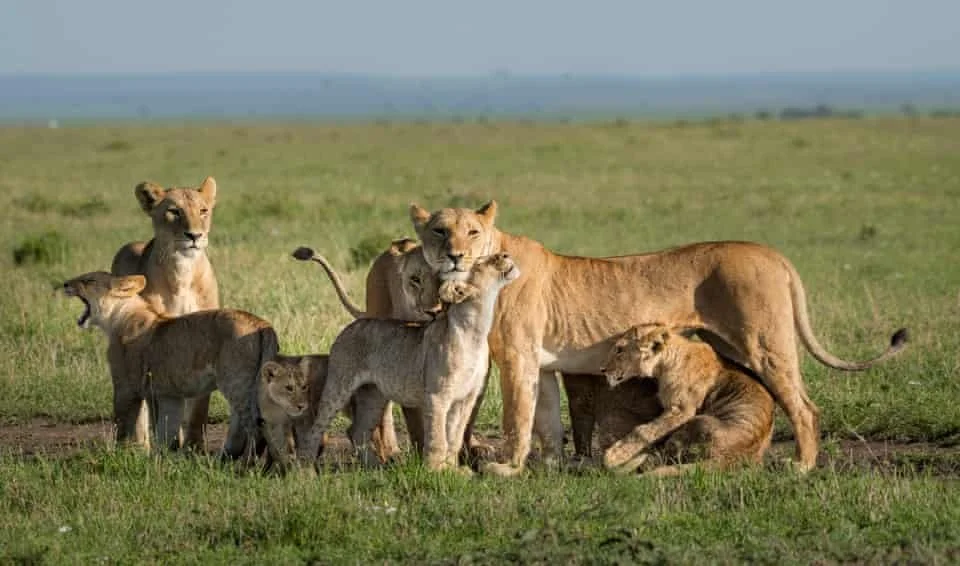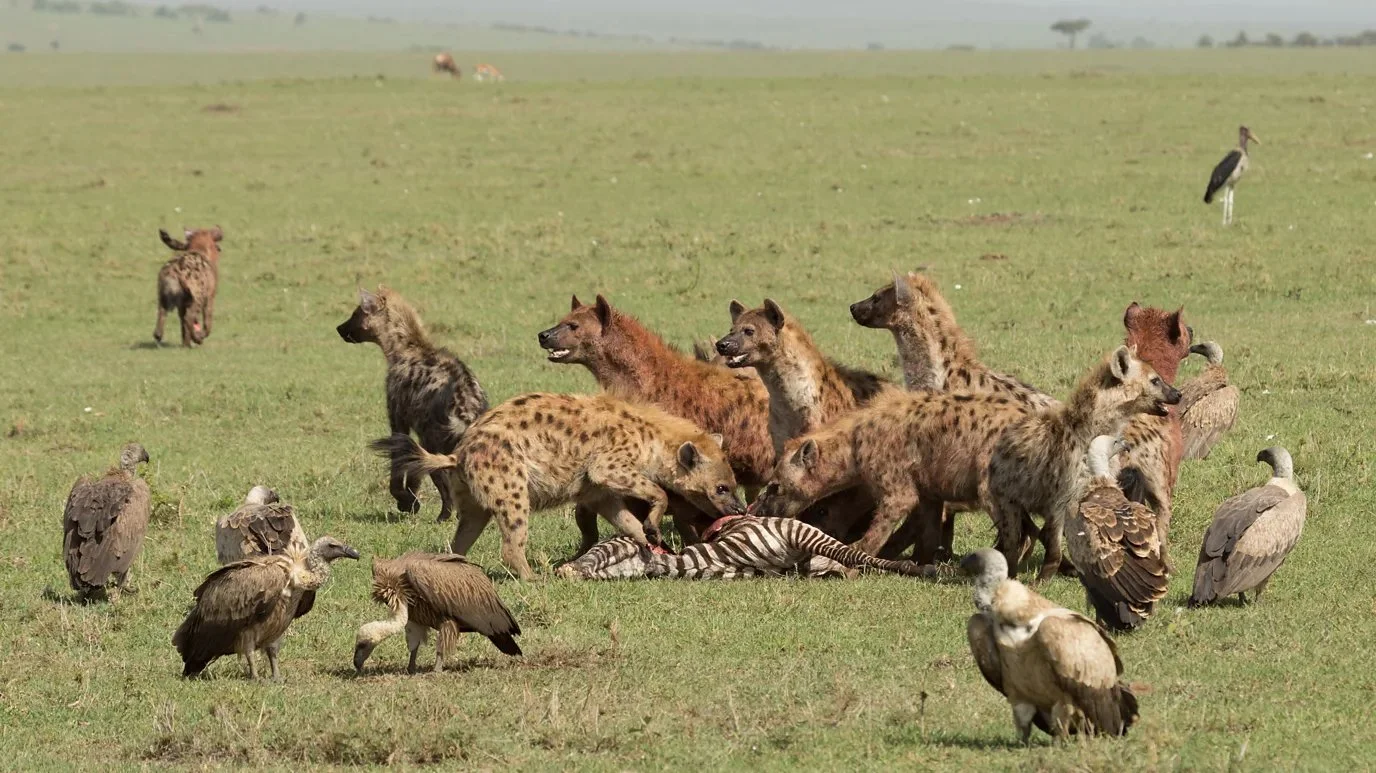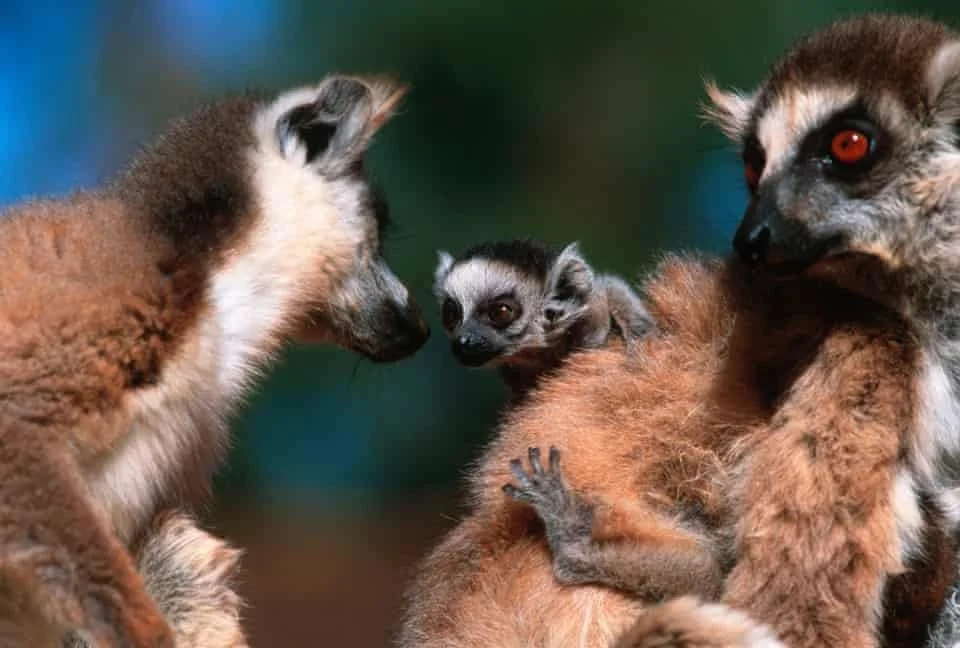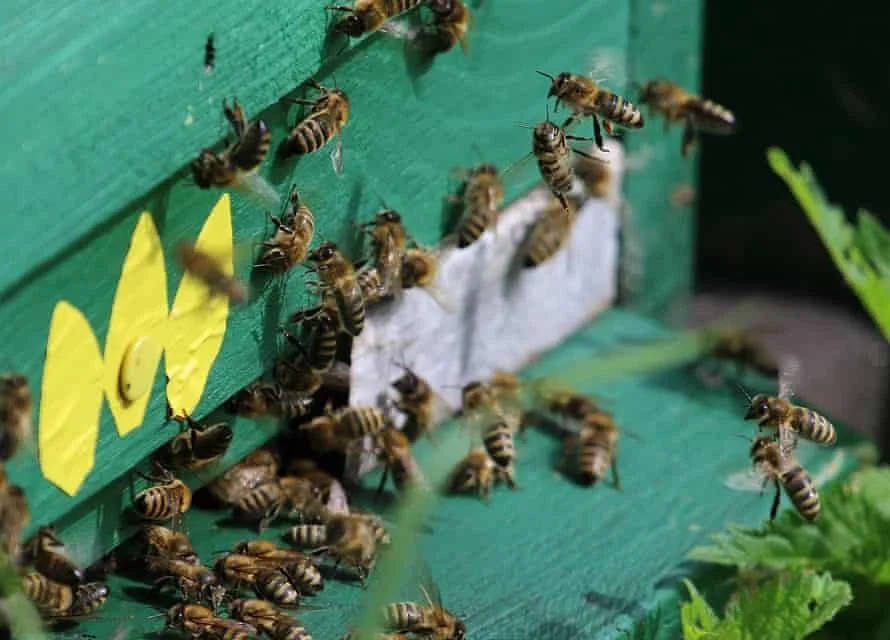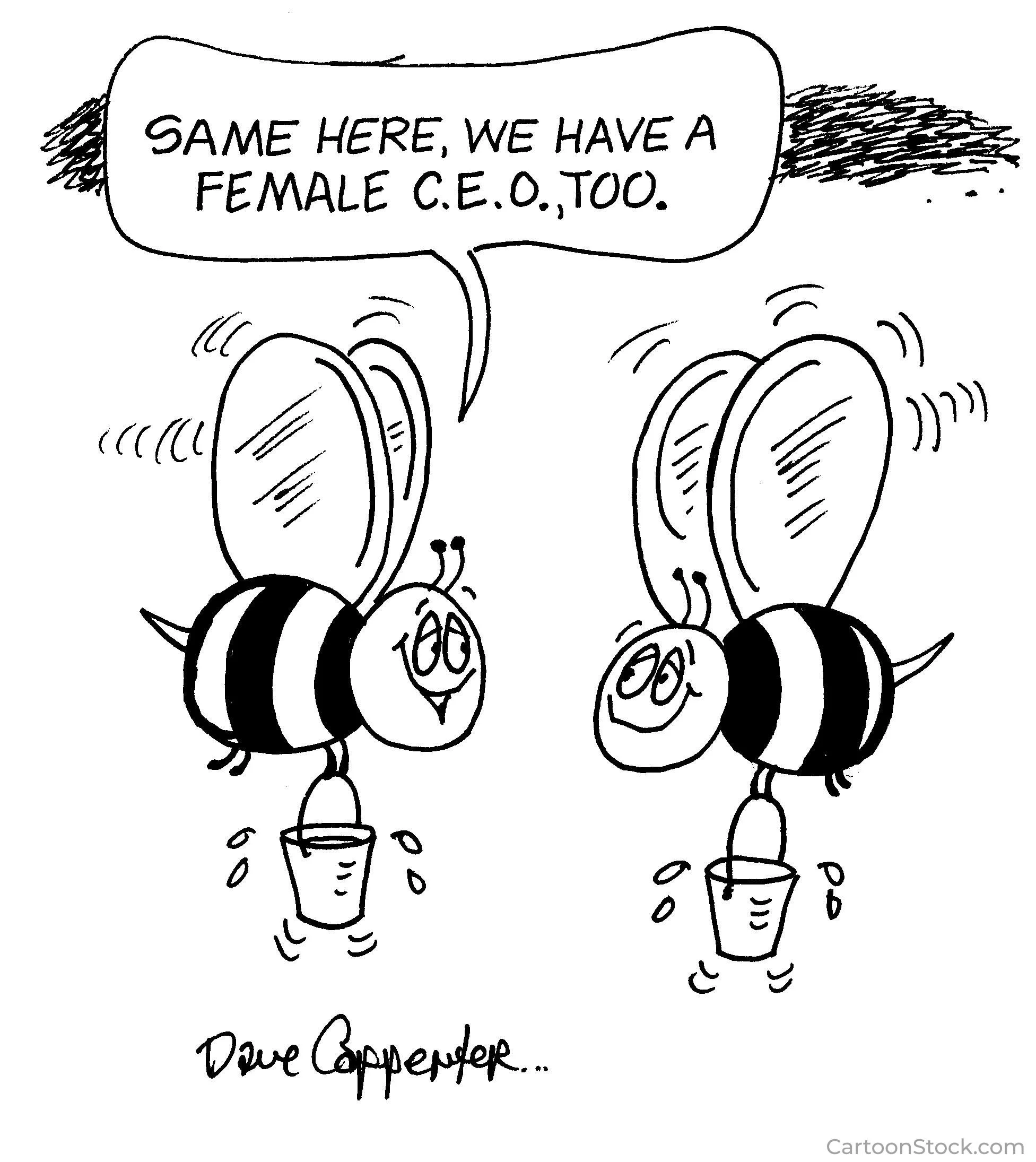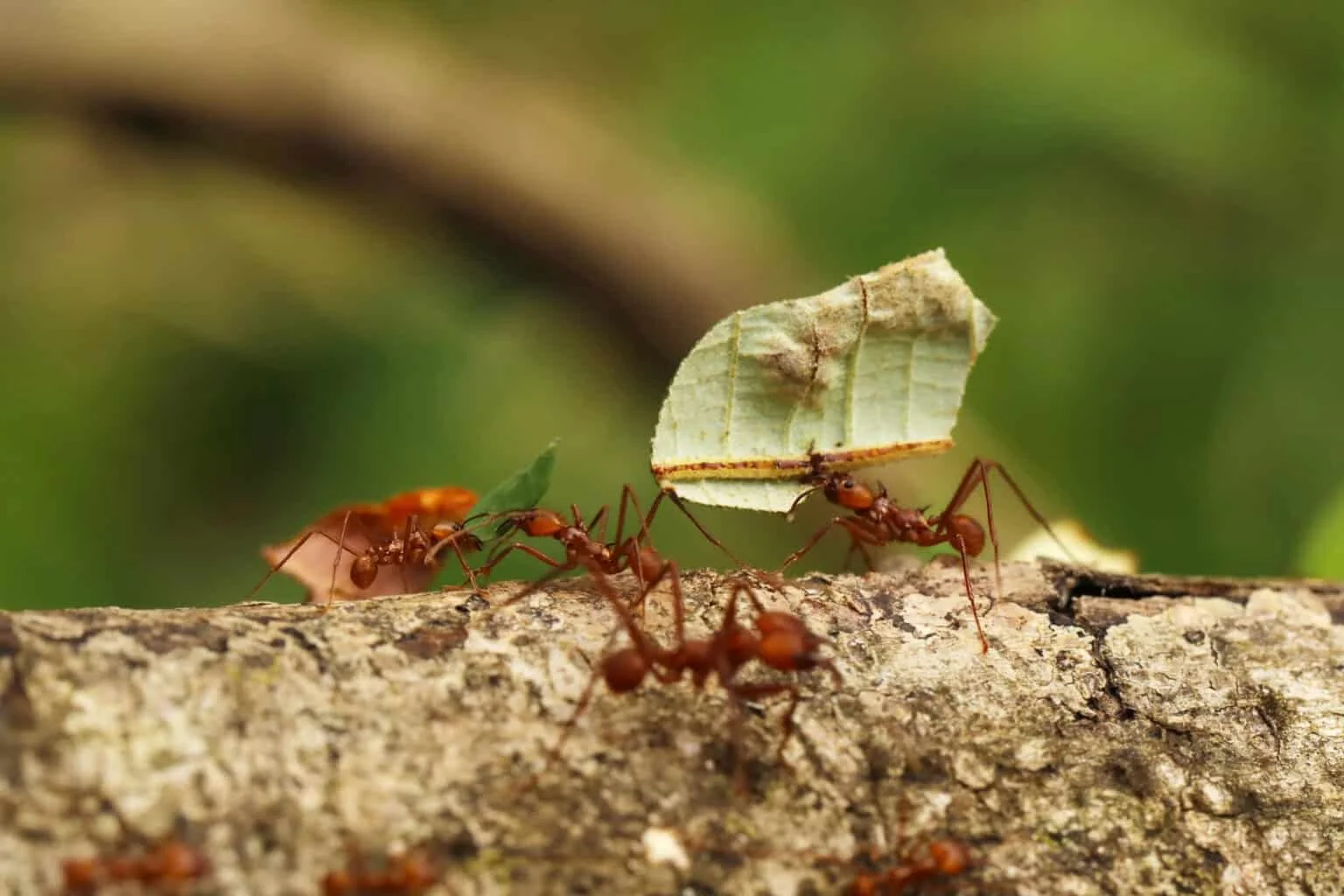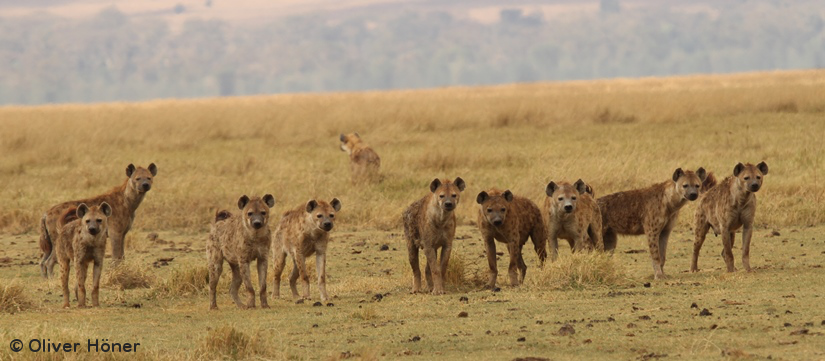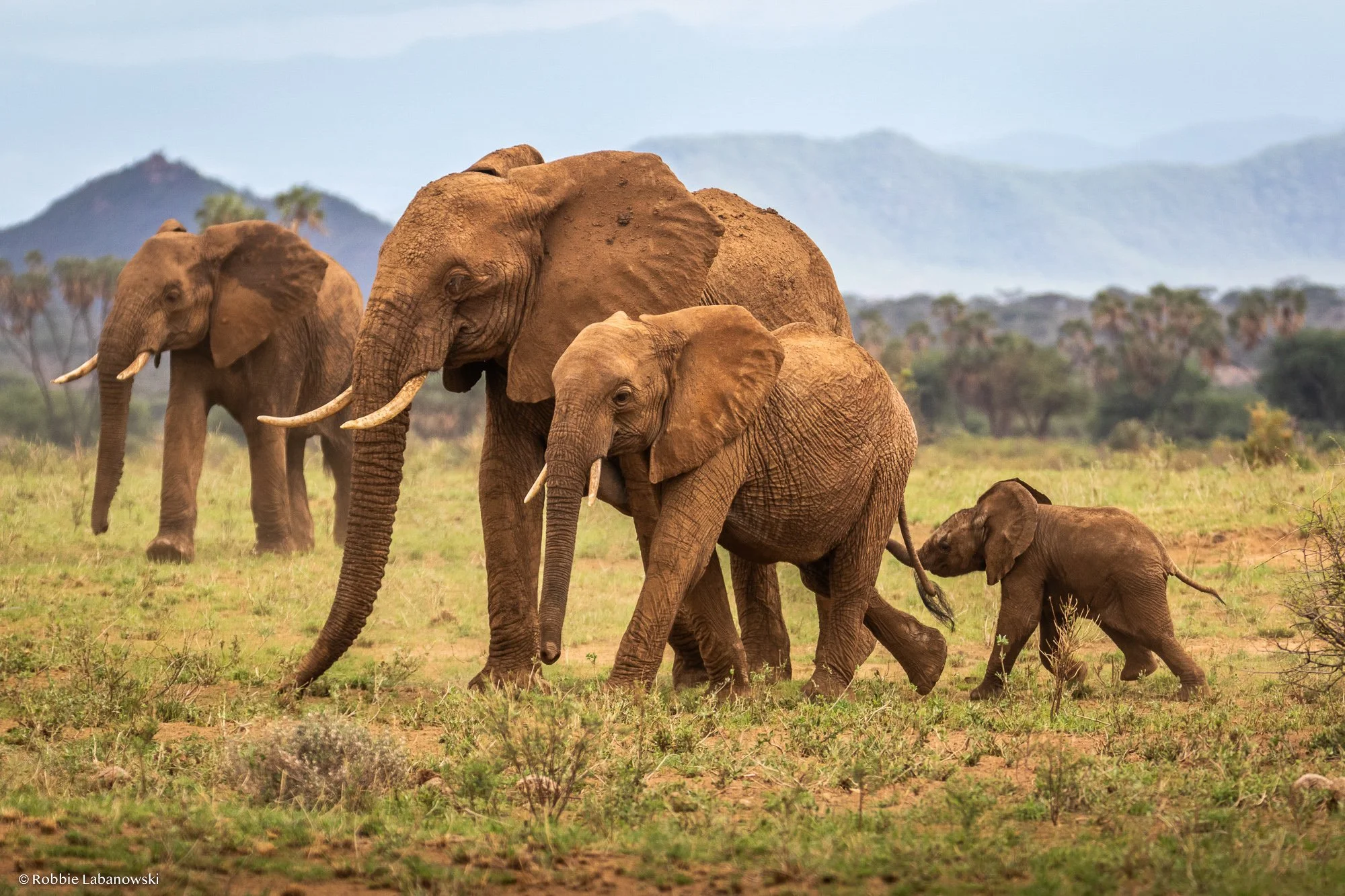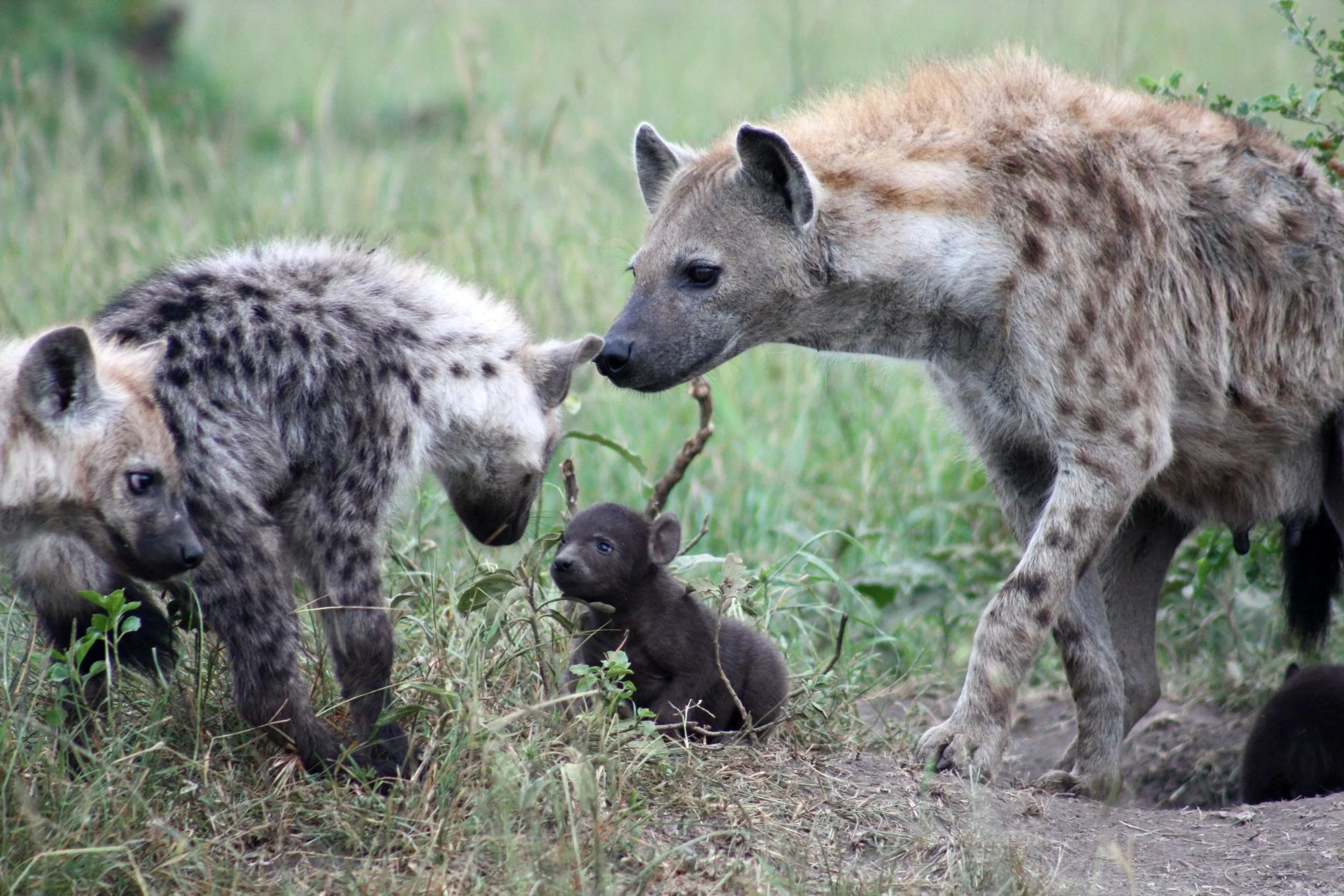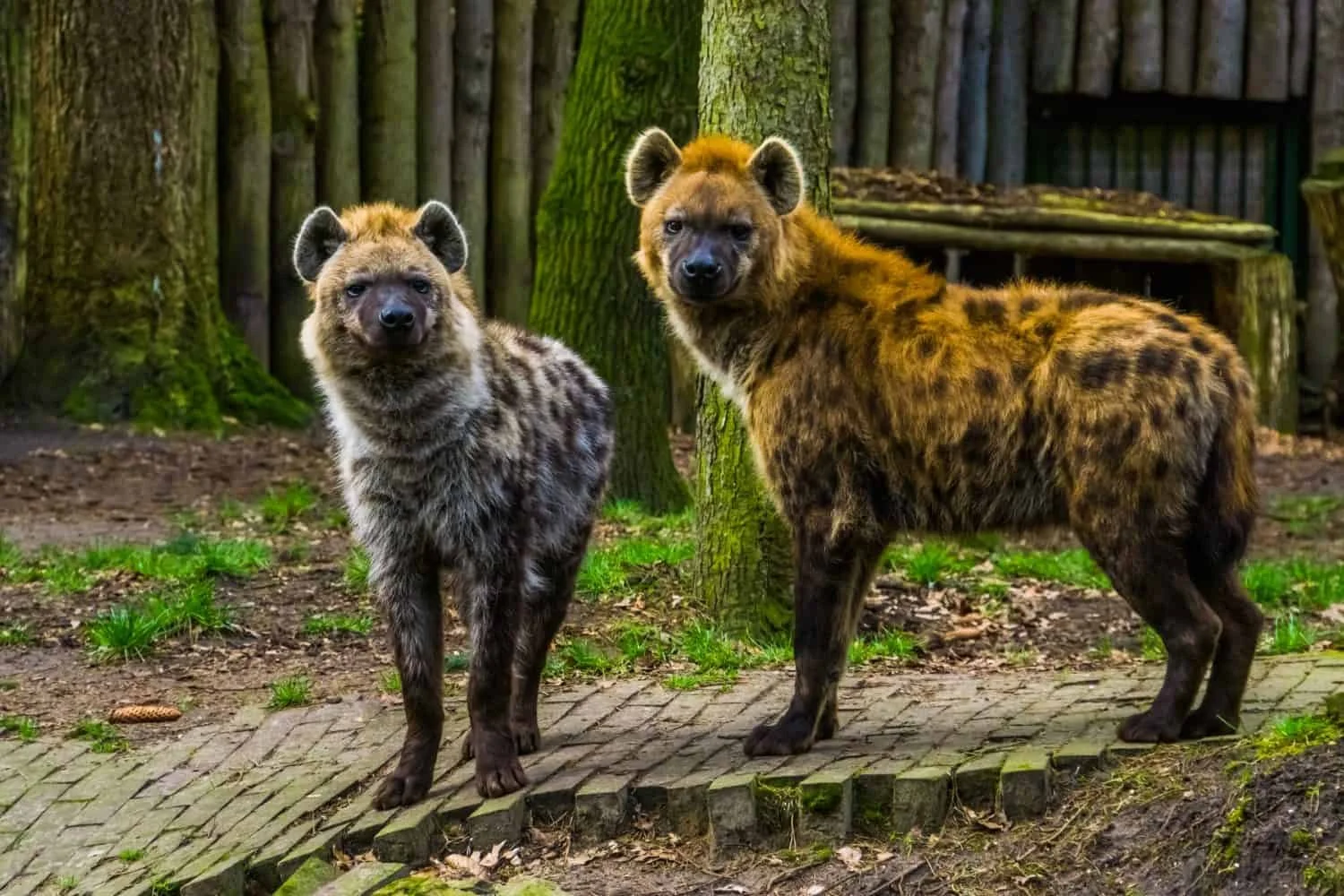ANIMALS AND INSECTS—WHAT CAN THEIR FEMALE LEADERS TELL US?
What do African savanna and other elephants 🐘 bonobos 🐒 African lions 🐅 orcas, lemurs, spotted hyenas, honeybees 🐝 and leafcutter ants 🐜 have in common?
Their commonality is that the females are dominant in their societies, with some of the societies following a matrilineal order.
Thank you Louise Connors for sending us on a journey into the non-human world by suggesting this intriguing topic:
What can we learn from animal and insect species that are led by the species female?
Her question was inspired by this article:
“What animals tell us about female leadership.”
26 September 2018, bbc.com
Claudine Andre founder of a sanctuary for bonobos in the Democratic Republic of the Congo (Credit: Alamy)
Could the animal kingdom hold the secret to smashing the glass ceiling? (1)
As humans puzzle over the glass ceiling and how to get more women into leadership, could it be possible to learn something from the outliers of the animal kingdom? It’s a controversial idea, but according to the scientists who made this discovery, the answer is yes.
New research has found that of the more than 5,000 known species of mammals, just a handful are led by females.
In a paper published this week [week of September 17, 2018], Mills College animal [behavior] professor Jennifer Smith and three colleagues identified eight species that exemplify female leadership: hyenas, killer whales [(orcas)], lions, spotted hyenas, bonobos, lemurs, and elephants.
“I think there’s a lot to learn from these non-human societies,” Smith says.
The researchers note it’s important not to confuse leadership with dominance. “Leadership is something that happens because there is a problem that needs to be solved by some kind of coordinated action,” says co-author Mark van Vugt, an evolutionary psychology professor at VU University Amsterdam.
Examples of problem-solving might be finding food, avoiding predators, or resolving conflict.
Dominance, on the other hand, has more to do with competition between individuals.
By the scientists’ definition, successful leaders have willing followers – they don’t need to convince people to join them.
~~~~~~
BONOBOS (1)
Making love, not war
A whopping 99% of our human DNA is the same as that of our closest primate cousins – chimps and bonobos. But while chimps tend to be male-led, bonobos take their lead from females.
Females make the travel plans, explains Takeshi Furuichi at Kyoto University, who studies bonobos in the Democratic Republic of Congo. Females eat first, because they organize dinner.
Conflict is much less common in bonobo societies versus their scrappy chimp cousins. Female bonobo bosses, although smaller than males, regularly intervene as peacekeepers.
While females often lose one-on-one scuffles with males, “When more than two females collaborate [to fight] males, 100% of the time, females win,” he says.
BONOBOS (2)
Bonobos are the only great ape society in which social groups are led by females. While the hierarchy between males and females is balanced, there is usually a group at the very top led by an older female.
Female bonobos are much smaller than the males, so instead of ruling by sheer physical strength, the female leader tends to earn her rank through age, experience and her ability to form strong bonds and alliances with other females in the group.
Female bonobos have been known to gang up against males who have tried to harm or intimidate another female in their group, even when that female is not related to them, which prevents the males from dominating through force.
~~~~~~
ORCAS AND MATRILINEAL ELEPHANTS (1)(2)
In orca whale pods and elephant families, older females run the show.
Wise orca grandmothers help their extended family thrive by knowing where the salmon are.
ORCAS (2)
Found in every ocean on the planet, these large dolphins (the killer whale is not a whale) are one of the most widely distributed mammals in the world.
[Behaviors] vary greatly from pod to pod, but most stay in tight-knit matrilineal groups, with leadership passed from mother to daughter. Orcas are one of only a few mammals known to go through menopause, and females live up to 90 years old.
The older females pass on valuable and complex knowledge about food resources and social habits, which can be the difference between life and death – a study found that young orcas with grandmothers were more likely to stay alive than those without.
As well as being educated, calves are disciplined by their mothers, who show signs of anger through actions such as hitting their tails in the water and making noises with their teeth.
MOTHER ORGAS EDUCATE THEIR BABIES. Photograph: William W Rossiter/WWF
~~~~~~
ELEPHANTS (1)
When it comes to elephant leadership, “We know that elephants have really good memories for patchy resources,” says Vicki Fishlock, a scientist at Amboseli Trust for Elephants in Kenya. It is knowledgeable matriarchs that lead groups to water in a drought.
With elephants, there’s an important difference between us and them. Most human societies are patrilineal, with wealth and status passing down the male line. Elephants (and orcas) are matrilineal.
“Elephant females are born to leadership,” says Cynthia Moss, director and founder of Amboseli Trust for Elephants, who has been studying them since the 1970s.
In adult female elephants, “there is no choice, nor is there any struggle with males for position. Males live separately and do not serve as leaders among the family groups of elephants,” she explains.
ELEPHANTS (2)
Female elephants and their young offspring live in close family groups, led by a matriarch – often the oldest and largest female in the family. Similar to a monarchy, elephants demonstrate succession: on the death of the matriarch, her eldest daughter typically takes her place as leader.
Proving wisdom comes with age, a study found that older matriarch elephants were better at assessing threats from predators than their younger counterparts, making them more effective at protecting the group.
AFRICAN SAVANNA ELEPHANTS (3)
The African savanna elephant (Loxodonta africana) is the largest elephant species and the biggest terrestrial animal on Earth.
According to WWF (worldwildlife.org), these elephants roam across sub-Saharan Africa in family units composed of around 10 females and their young. Often, these family units join to form "clans" of several hundred elephants that are headed by a single female matriarch.
This leadership role is usually assigned to the oldest and most experienced female of the group.
The matriarch makes decisions about where the herd goes, how to respond to threats and crises, and when and where to settle down to sleep.
She also leads the elephants to food and water, which is no small task, given that African savanna elephants require around 300 pounds (140 kilograms) of vegetation and up to 50 gallons (190 liters) of water per day to maintain their humongous size.
But the matriarch's wisdom and authority do not necessarily make her an autocrat, according to the nonprofit organization Elephant Voices. Other members of the group can make suggestions and influence where the elephants move to, for example.
There can also be conflict between females, and this sometimes bubbles over when the matriarch dies and leaves behind a power vacuum.
Male African savanna elephants associate with female-led herds only during the mating season.
~~~~~~
Lions (2)
Although they are known as “kings of the jungle”, lions live in groups made up mostly of females, who are in charge of hunting and providing for the other members of the pride.
A pride of lions is usually made up of related females and their cubs, and lions are unique among cats in the way they live and work together. They give birth at the same time, rear the cubs communally within the pride, and cubs can suckle from any female with milk.
About two-thirds of females stay within the pride they were born into.
African Lions (4)
Male African lions might get all the attention, but females are responsible for the pride’s survival.
They carry tremendous responsibility, including cub rearing, maintaining a hierarchy, protecting their offspring, and defending territory.
Female African lions even hunt and are responsible for bringing in the bulk of the food within a pride.
Groups of females often team up when taking down large prey, working together to coordinate their combined strength.
FEMALE AFRICAN LION WITH CUBS, IN THE MASAI MARA IN KENYA.
Photograph: Richard Barrett/WWF
~~~~~~
HYENAS (1)
Hyenas are cooperative hunters. In hunting, mainly males lead.
But in other ways, females call the shots. Female hyenas are larger and stronger than males, and direct where the groups go. Typically, hungry lactating females take the lead, followed by youngsters and males.
Female hyena leadership is important during clan wars, when groups battle it out, usually over territory.
Credit: Getty Images
SPOTTED HYENAS (2)
Spotted hyenas live in clans of up to 80 members led by alpha females. In these matriarchal societies, females have evolved to be larger than males and do most of the hunting, dictate the social structure and raise the cubs.
Females almost always stay with the clan they are born into, inheriting their mother’s rank in the complex and competitive social ladder. Litters are usually two or three cubs born in private dens or the main communal den.
Shortly after birth they begin tussling for dominance, particularly in same-sex litters. Most males disperse to join other clans where they start at the bottom of the group hierarchy, meaning the highest-ranking male is often subservient to the most junior female.
~~~~~~
LEMURS (2)
There are about 100 species of lemur, and within most social structures females take a dominant role.
They are the only species of primate where the males and females are very similar in size; usually females are smaller. Lemur females show signs of dominance by the ways they mark their territory within the group.
They have also been known to snatch food away from males and kick them out of sleeping spots.
FEMALE RING-TAILED LEMURS WITH INFANTS IN
MADAGASCAR.
Photograph: Martin Harvey/WWF
~~~~~~
BEES (3)
The queen bee is the only female in the colony capable of reproducing, and she can lay up to 1,500 eggs a day.
The queen gives off a pheromone that sends a message to the workers about her health and productivity. She is constantly nurtured by a court of worker bees. Among other things, they groom her and control what she eats.
Throughout her larval phase they will feed her royal jelly (a nutrient-rich substance produced by worker bees) and at certain times of year workers will put their queen on a diet so she can fly long distances when the colony swarms – dividing in two when there are too many bees for one queen.
~~~~~~
LEAFCUTTER ANTS (4)
Honeybees are not the only insects with queens at the center of their colonies. Leafcutter ants have a similar hierarchy, with a queen that’s responsible for reproduction and order.
Queen leafcutter ants are protected within the innermost chamber of the colony. The queen lays all of the eggs, producing female worker ants that build and forage. The queen can live an astoundingly long time, sometimes up to 20 years or longer.
Worker ants have equally important responsibilities within the colony. When they’re not building or foraging, they’re in charge of maintaining fungus gardens. This is where leaves are turned into a viable food source, providing sustenance for the entire colony.
They also have the role of caring for young ants and ensuring they reach full maturity. When it comes time for reproduction, winged female ants participate in swarms. This is where they meet up with males, who have the sole role of mating. Once this happens, female winged ants become queens and start their own colonies.
~~~~~~~~~~~~
WILD TIPS FOR WOMEN (1)
One take-home message that can be drawn from analysing female leadership in mammals is the crucial importance of coalitions: who you’re friends with in your social networks, and the expertise that comes with age and experience.
Female leadership, the animal world suggests, is more likely to emerge when females form cooperative units.
Smith cites the #MeToo movement, as a parallel human example, where “anyone can get involved, and it doesn’t matter how much brute force you have,” says Smith.
“These virtual coalitions of women forming are really influencing societal outcomes, so that is leadership, and that directly speaks to what we see in bonobos, hyenas, and these groups that join forces,” she says.
HYENA COALITION
~~~~~~
SUBTLE CUES (1)
Smith’s team argue that some forms of female leadership have been entirely overlooked. Leadership research often focuses on large, complex hierarchies within a business, government or military.
But the way some forms of female leadership work, within families and small groups for instance, it is more subtle but nevertheless provides valuable insight.
Even in primates with male-biased leadership, female leadership can go unnoticed. Julie Teichroeb, University of Toronto primate [behavioral] ecologist, studies vervet monkeys.
Because females of this species lead from the middle or rear of a group – think middle management – early studies mistakenly determined that decision-making was done by large males at the front, she explains.
VERVET MONKEYS
[FOR HUMANS TO CONSIDER]
Of course, our biological legacy is only one aspect of why females are underrepresented in leadership.
The other aspect is culture.
People are skilled in cultural innovations that can change our own environment, therefore Smith’s team argue we could shape a future with more leadership opportunities for women.
Lessons from Animals About Barriers to Female Leadership
from “Psychology Today”
A seminal new study points to reasons why females don't, but could, lead.
Posted October 9, 2018
https://www.psychologytoday.com/us/blog/animal-emotions/201810/lessons-animals-about-barriers-female-leadership/amp
Marc Bekoff PhD interviewed Dr. Jennifer Smith [the researcher mentioned in the article, “What animals tell us about female leadership,”] (1)
MARC BEKOFF ASKS JENNIFER SMITH:
BEKOFF: In your essay, you note seven observations that might be relevant to humans.
Can you briefly explain each?
SMITH:1. Female leaders most often emerged within families and small egalitarian groups, such as occurs in lions and elephants. This often occurs when adult females are followed by their dependent offspring.
LIONS
Although simply moving from place to place has often been viewed as a trivial process, females are key in moving groups away from danger and towards food, both of which are vital for survival.
THE SISTERHOOD OF ELEPHANTS
This is just one example of the many ways that female mammals influence societal outcomes in important ways that are often overlooked or otherwise under-appreciated when viewed within the traditional operationalizations of human leadership.
2. Strong female leaders are more likely to emerge when females form cooperative units, such as occurs in bonobos and spotted hyenas.
FEMALE BONOBOS FORM GIRL GROUPS TO FEND OFF MALE AGGRESSION
It isn’t a simple case of strong individuals outmuscling the other. Bonobo females rise to power by sticking together.
Decades of observations in Congo lend support to the idea of a sisterhood in which female bonobos band together to assert their power.
~~~
This pattern has obvious implications [for women] because it suggests that women are more likely to be successful leaders when forming strong coalitions within their social networks.
Women may benefit from using social media and fostering coalitions of their own to form strong alliances resembling the boys' network in men.
SPOTTED HYENAS
3. Female elders often serve as important repositories of knowledge, leading group members to important food sources and away from danger.
FEMALE ELDERS
In orcas to elephants, we see a combination of a long lifespan and groups consisting of multiple generations of individuals belonging to the female lineage, including post-reproductive females with extensive knowledge.
GRANNY ORCAS PASS ON KNOWLEDGE TO GRANDCHILDREN
4. Strong female leaders seem more likely to emerge in species for which conflict management within groups is vitally important, as occurs in spotted hyenas.
SPOTTED HYENAS
This suggests a niche for women as leaders in organizations requiring conflict mediation within and between groups.
5. Many of the mammalian species with patterns of strong female leadership deviate from the typical mammalian pattern such that females are slightly bigger and stronger than males, either on their own, by joining forces with each other, or both.
[Female] spotted hyenas, for example, are physically larger than males.
Female and male lemurs are the same size. In contrast, bonobos must join forces with other females to overcome their smaller size compared to males.
MALE (L.) vs. FEMALE (R.) SPOTTED HYENAS
With new technologies, humans are able to overcome these physical barriers, with virtual and in-person coalitions mobilizing and empowering women to overcome these potential barriers.
6. Some traits observed in mammals with strong patterns of leadership, such as a bias for female dispersal, within human groups likely cannot explain the scarcity of female leaders in humans.
We (humans) share 99% of our genes with bonobos and chimpanzees. Although both species resemble humans in that they also show patterns of female-biased dispersal, only bonobos have strong female leadership.
7. Our review has practical implications for women's leadership in modern business and politics. It suggests that some factors may be partly the result of evolved sex differences in physique and behavior but also that humans have the potential to overcome these obstacles.
~~~~~~
MARC BEKOFF ASKS JENNIFER SMITH ANOTHER QUESTION:
BEKOFF: You also note that possible "evolutionary obstacles" to female leadership in humans are not insurmountable.
What are they and why do you think they can be overcome?
SMITH: In the article, we state that, “As a cultural species, we humans are able to select for our own future, get rid of – if we want – glass ceilings and pyramids, and create the kinds of social structures that enable organizations to profit from the “female leadership advantage”.
For me, this is the notion that cultural traditions of humans may shape opportunities for female leadership is very exciting and leaves me with a sense of optimism.
We have much to learn from the fascinating ways that natural selection has favored behavioral traits of non-human animals.
By studying non-human mammals where females rule the roost, we may gain insights into secrets for smashing the glass ceiling.
As humans, we possess the capacity to choose the ways we live, lead and help others. We may implement lessons we see as valuable and cast away those that we do not.
Our study suggests that we may benefit from building support networks, learning skills from elder women in our communities, and managing conflicts effectively.
UN Women
Recognizing this is the first step towards promoting a more equitable society in which women are welcomed and supported as leaders.
Our study suggests that not only is this a moral thing to do, but that supporting the emergence of women as leaders will benefit society as a whole. (emphasis Anne’s)
NOTES:
“What animals tell us about female leadership.”
26 September 2018, bbc.com
This BBC article inspired Louise Connors.
“FROM ORCAS TO HYENAS: MEET THE QUEENS OF THE ANIMAL KINGDOM”
“The Guardian” www.theguardian.com
“The Guardian” picture essay
Fri 3 Jun 2022 EDT Last modified Tue 7 Jun 2022 EDT
“6 Animals Where Females Reign Supreme”
Countdowns By Sascha Pare July 4, 2024, LiveScience.
Live Science launched in 2004 as a complement to the space and astronomy news site Space.com.
“These Female-Led Animal Species Prove Girls Run the Wild” by Linda Tedesco, August 5, 2025, Updated October 27, 2025, A-Z Animals
A-Z Animals believes that if people are educated about the natural world they will better care for the earth and all species that occupy it.
IN YOUR OWN WORDS:
—”I missed your post! I knew you said you were skipping a week, but I still missed it!!! It’s a highlight!”👍 —LC
Previous Post: “~A Short Exercise in Partnerism ~” Written by Anne Andersson, October 24, 2025
—”Post looks good! Very clear and accessible. And I think exposing people to the first Genesis story could be eye-opening for most. It was for me!”—CA
BELIEVE THE WOMEN.
REMEMBER THE SURVIVORS.
TODAY’S FEATURED PERSON IS: AMY WALLACE, WHO IS THE GHOST WRITER WHO CO-WROTE VIRGINIA GIUFFRE’S POSTHUMOUS MEMOIR,
Nobody’s Girl: A Memoir of Surviving Abuse and Fighting for Justice
(published October 21, 2025).
Virginia Roberts Giuffre survived abuse at the hands of Epstein, Ghislaine Maxwell, and a number of powerful men. Giuffre died by suicide earlier this year.
HERE IS KATIE COURIC’S POWERFUL—AND POIGNANT— INTERVIEW AS AMY WALLACE SPEAKS ON BEHALF OF VIRGINIA.
ON SUBSTACK — OCTOBER 24, 2025
Virginia Giuffre’s Truth and Epstein and Maxwell Lies
https://youtu.be/AraBCcyGegc?si=McR5-iLIJuU-tiV7
AMY SAYS: THIS BOOK IS ABOUT THE ARC OF A WOMAN’S LIFE—
WHO ADVOCATES FOR THE REST OF US. SHE STOOD UP FOR WHAT IS RIGHT.
VIRGINIA WANTED PEOPLE TO GET ANGRY ABOUT CRIMES LIKE THESE THAT INVOLVE THE FETISHIZATION OF YOUNG GIRLS AND MISOGYNY—AND CLASS—AND POWER—AND HOW RICH PEOPLE GET AWAY WITH IT.
THESE ARE ISSUES THAT NEED ATTENTION.
~~~
BREAKING LACK OF NEWS!
U.S. HOUSE SPEAKER STILL PLAYING HOOKY
The House Speaker has compelled the U.S. Representatives, members of the House, to remain on an extended shutdown recess—effectively keeping them out of work in D.C.—for over a month.
SEEMINGLY FOR ONLY ONE REASON:
in order to delay the swearing in of U.S. representative-elect Adelina Grijalva (D-Arizona) who has said she would become the needed 218th signer of a document that could force the release of the Epstein files.
C:WED WISH LIST:
We will be covering general topics of choice at a more liesurely pace than we recently have been—while remaining within our framework of Women, the Earth, and the Divine.
Perhaps you might suggest a topic for the C:WED blog.
We would love to hear from you!
—Please do send your suggestions to: info@cwed.org
Once again, we thank those who have already suggested topics!
—PLEASE keep reading our posts!
Share their views.
—PLEASE spread the word about us!
Share our website with your friends, relatives, and
colleagues: www.cwed.org
—HELP keep us afloat with a tax-deductible gift.





